
“Reason is, And Ought Only To Be The Slave Of Our Passions”
—David Hume
EARLY SIGNS OF A TRAIN WRECK
The city’s Measure O Oversight Committee has shown signs of being inadequately trained and poorly prepared for the job they were appointed to do. This is not the fault of the committee members themselves but a reflection of the City Council and City Staff.
The Measure O Citizens Oversight Committee conducted their third public meeting on August 10,2017 at the Sanjon Maintenance Yard (Ventura Water Department). Each of the three meetings has been at a different location. They are not televised or recorded in any manner. Few members of the public attend.
This new tax oversight committee, appointed following the sales tax increase approved by the voters in the last election, serves ostensibly to provide recommendations to the City Council on how the new $10 million, in new sales tax money should,or presumably, not be spent.
The City of Ventura Finance Department did a yeoman’s job in attempting to provide the committee with a draft of proposed future spending of Measure O funds for the next 5 years. It was a suffocating spreadsheet which required detailed comments and direction on the evening of the meeting. If the purpose was to provide clear, informed and relevant information for the public and the committee as a basis for making decisions on how to spend the new tax money, it fell short.
The City Finance Department made a good effort to explain everything but the complexity of the subject required more than a brief meeting.
SPENDING PROJECTED TO EXCEED INCOME
For most citizens seeing this spreadsheet for the first time, be prepared to understand that
there is a projected deficit by the second year, and each year after that. See this detailed projection here.

Measure O overspends by $1.76 million in the second year
At first glance, the Measure O funding will be overspent by $1.761m in the second year. By the fiscal year 2022, the City of Ventura will be over budget (spending more than they expect to receive) by $3.732m. We must all keep in mind that this is a draft worksheet for discussion purposes only; but even so, to learn at the outset that the head of our finance department predicts a deficit in just 5 years for a new tax that will last 25 years does not bode well.
What is clear however is that the Committee is being asked to approve thisprojection, and that a very large percentage of those projections are for long term contracts for public safety and city personnel. History has demonstrated quite clearly that those “contracts” are never reduced thus we can expect more and more of this new tax money to be consumed for personnel and benefits. Everything else – roads etc. – will be low on the list of priorities.
There were two things that the Measure O Committee needed to concentrate on. One was that the only annual budget recommendation that really needed to be discussed was for fiscal year 2018. The second was that they were only seeing a small percentage of the financial picture. The general budget line items were not presented, thus there was no way for anybody to perform an analysis of where money “should” or “should not” be spent, or to determine if the general budget had been modified and then back filled with the new tax money. Without a comparison to the general budget, it is impossible to perform that task.
For example, by not having the general budget for a specific department, side by side to that departments proposed Measure O Funding, the Measure O committee had no way to determine if say $700,000 for sidewalks made sense because they have no idea if Public Works is spending another $1.0m or zero out of the General Fund Budget for sidewalks.
CITY DEPARTMENT PRESENTATIONS
Each of the three sought the Measure O Oversight Committee’s approval to present their spending to the City Council. Public Works Director, Tulson Clifford, presented his department’s request for $6.1 million in 2017-2018. Police Chief, Ken Corney, presented his department’s request for hiring new officers in time to enter them into the training academy in October 2017. And, Nancy O’Connor, Parks Director, presented her department’s request.

Police Chief Ken Corney’s request was approved by the Oversight Committee
There were only 5 of the 7 Committee members present and this would present a potential problem for the Measure O Committee. After about 2 hours, the Committee Chair person suggested that no recommendations be made until all 7 committee members were in attendance. This was after hearing Chief Corney explained that timing was crucial and the funding for the Neighbor Drug & Crime Prevention required the hiring and training of 7 new officers at the police academy in October. .
If it had not been for Committee Board Member Kristopher Hansen’s quick thinking and motion, to recommend to City Council the Police Chief’s request for funds, the outcome could have been detrimental to the Ventura citizens. Measure O Citizens Committee did their job and funds were approved for the police department and postponed for all other requests.
EDITORS COMMENT
To assist this new committee in their task and to maintain transparency for all citizens in the community VREG makes the following suggestions and recommendations:
- Have the entire department’s general funds budgets side by side the Measure O budget.
- The Department Heads provide a detailed cost breakdown on how the funds will be spent which matches the line items on the general budget.
- Discussing department spending five years is helpful but misleading. There are too many variables to factor over that period, such as personnel, maintenance costs, contracts, natural resources, safety, technology and public demand.
- Increase and improve the training for current and future committee members. Be satisfied they understand their roles,duties and responsibilities.
- Be sure they know Parliamentary procedures, so they help, not hinder, city government such as what constitutes a quorum to act.
- As needed, provide in-meeting guidance and direction from city officials whenthe committee appears confused or aimless.
- Hold the meetings in places that permit cable TV coverage. Transparency isimportant to Measure O. Thus far, it has not been transparentI nhibits transparency and confuses the public on where to attend meetings.
- Hold the meetings in the same facility. Moving from location to location
Addendum
THE STAFF PRESENTATION/REQUESTS FOR FUNDS
To help you better understand, we have included both Public Works and the Parks and Recreation presentations so you may judge for yourself that there is no correlation to the Measure O budget requests on a line by line analysis to the general budget. Here is a verbatim of what they were told:
PUBLIC WORKS
The Public Works Department is charged with designing, building, operating and
maintaining the City’s infrastructure including:
- 75 buildings;• 700 lane miles of pavement and adjacent sidewalks;
- 138 traffic signals;• 26 miles of alleys;
- 22 parking lots; and
- An extensive storm drain system (110 miles of storm drain lines, 2,400 storm drain inlets, and 9 miles of drainage ditches).
Some of this infrastructure was installed over 100 years ago, and much of it has
reached or exceeded its useful life. The following infrastructure improvements are needed to protect the environment for the safety, enjoyment and prosperity of future generations:
- Improve streets, sidewalks, alleys, and provide safe facilities for pedestrians and cyclists – $191 million;
- Clean and protect the beaches with storm water and drainage repairs – $34 million;• Protect and seismically improve bridges $27 million and
- Repair public buildings and facilities $27 million.
Public Works has reviewed the infrastructure needs and prioritized projects based on existing conditions, risk, liability, and other factors. While we recognize that not all of these improvements can be made in year one, this proposal contributes to the long-term sustainability and resilience of Ventura’s infrastructure. The proposed Measure O budget for Public Works projects in FY 2017-18 is $6.1 million. These projects include pavement overlay on Telegraph Road (Main St. to N. Mills Dr.) and replacing the storm drain at Harbor Blvd. and Olivas Dr.
PARKS, RECREATION AND COMMUNITY PRESENTATION
PRCP focus for Measure O will be aimed at delivery of service to activities that “reduce blight, assist the homeless, and maintain or improve existing facilities and infrastructure”.
Safe and Clean. Expansion of current program allows for additional staff to respond to homeless debris cleanup as well as general trash, debris, weeds, in right of ways, sidewalks and roads.
Urban Forestry Tree Maintenance. This proposal provides resources to prune 10,000 trees each year, in addition to the approximately 6500 trees that are currently trimmed annually. Expected outcomes will allow for all city maintained trees to be on a 3 to 5 year pruning cycle (species dependent). The current pruning cycle is 7-9 years.
Median Maintenance. Current maintenance of medians is approximately once per month, medians only, minimal sidewalk maintenance at best. Expanded funding of the program will allow median and sidewalk maintenance on main arterials to be performed twice per month.
Aquatic Center Maintenance. The Aquatic Center, at Community Park, opened in 2002 and most of the hard components of the center-pumps, motors, tanks, and the pools themselves, have a finite useful life, and need regular maintenance and replacement. There is no sinking fund associated with the pools and adding ongoing funding allows optimal maintenance, and helps keep the pools operating safely.
Preserving Park and Recreational Facilities. Community Park has one entrance, at Kimball Road. The master plan for the park includes an additional entrance from Telephone Road, at Ramelli Avenue. Hundreds of people enjoy Community Park daily, and on weekend the number of visitors is oftentimes in the thousands. A second entrance improves access to the park, and allows for larger softball, soccer, and swimming events.
Restroom at Arroyo Verde. Many of the park restrooms are closed on a regular basis due to issues with cleanliness and safety. The City of Portland, Oregon developed a stainless-steel restroom. These restrooms have been installed in their downtown areas, and are frequented by tourists and the homeless. The restroom’s main features are fabrication-alone piece, ease of cleaning, and drastically reduced cost due to prefabrication.
Have An Opinion? Share It With A City Councilmember.
Click on the photo of a Councilmember to send him or her a direct email.
 Erik Nasarenko,
Mayor |
|
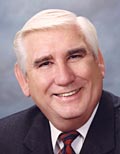 Neal Andrews,
Deputy Mayor |
 Cheryl Heitmann |
|
 Matt LaVere |
 Jim Monahan |
|
 Mike Tracy |
 Christy Weir |
|
|
For more information like this, subscribe to our newsletter, Res Publica. Click here to enter your name and email address.
Editors:
R. Alviani K. Corse T. Cook B. Frank
J. Tingstrom R. McCord S. Doll C. Kistner
















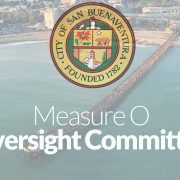





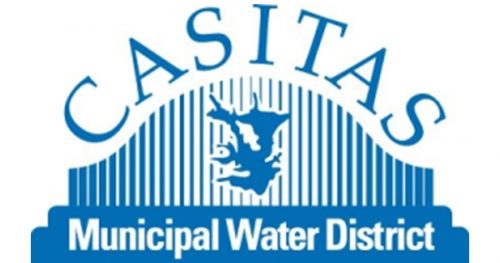







 No matter what the reason is, the City Council has to stop looking at taxpayers as an endless faucet from which money flows. It’s time they started spending our tax money as if it was coming out of their own pockets, not some faceless person.
No matter what the reason is, the City Council has to stop looking at taxpayers as an endless faucet from which money flows. It’s time they started spending our tax money as if it was coming out of their own pockets, not some faceless person.

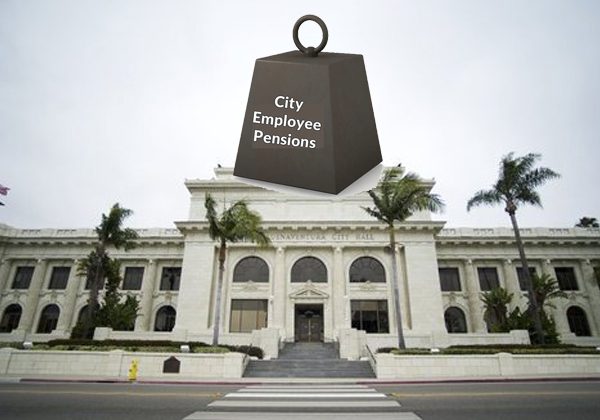




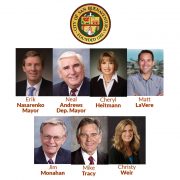





 Our new logo captures what Venturans for Responsible and Efficient Government is about. We explain how Ventura city government manages our finances. Our goal is to examine the policy decisions behind our tax dollar expenditures. The new logo features a hand signaling to stop the wasteful use of our money. We’re your eyes and ears to guarantee our elected officials spend on projects for the city’s good.
Our new logo captures what Venturans for Responsible and Efficient Government is about. We explain how Ventura city government manages our finances. Our goal is to examine the policy decisions behind our tax dollar expenditures. The new logo features a hand signaling to stop the wasteful use of our money. We’re your eyes and ears to guarantee our elected officials spend on projects for the city’s good.